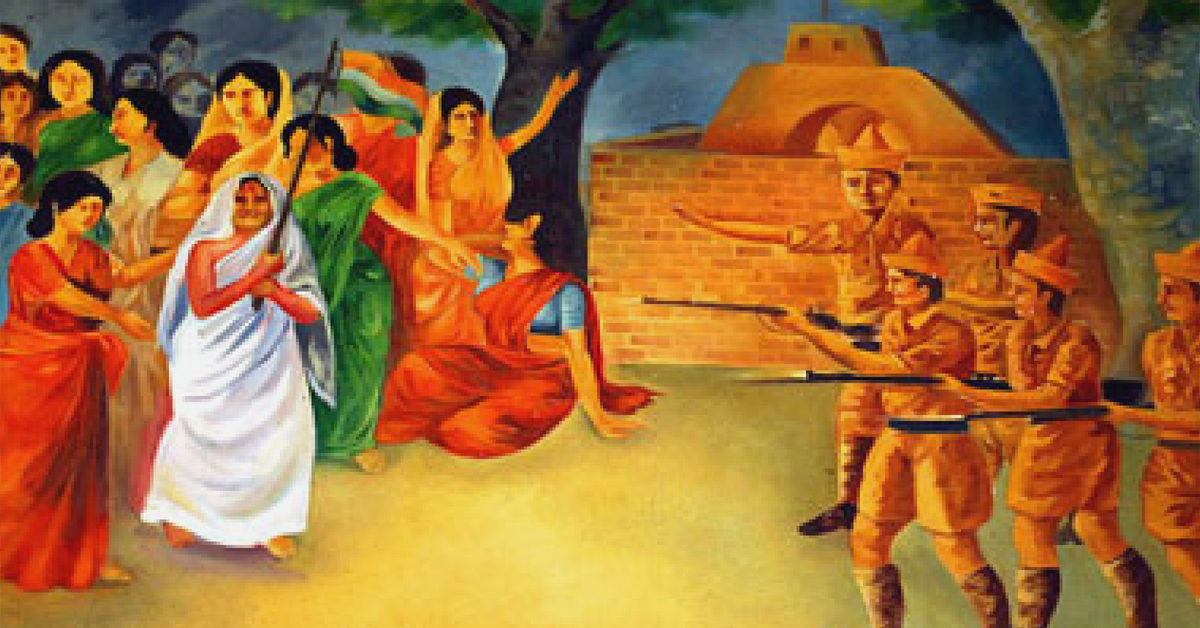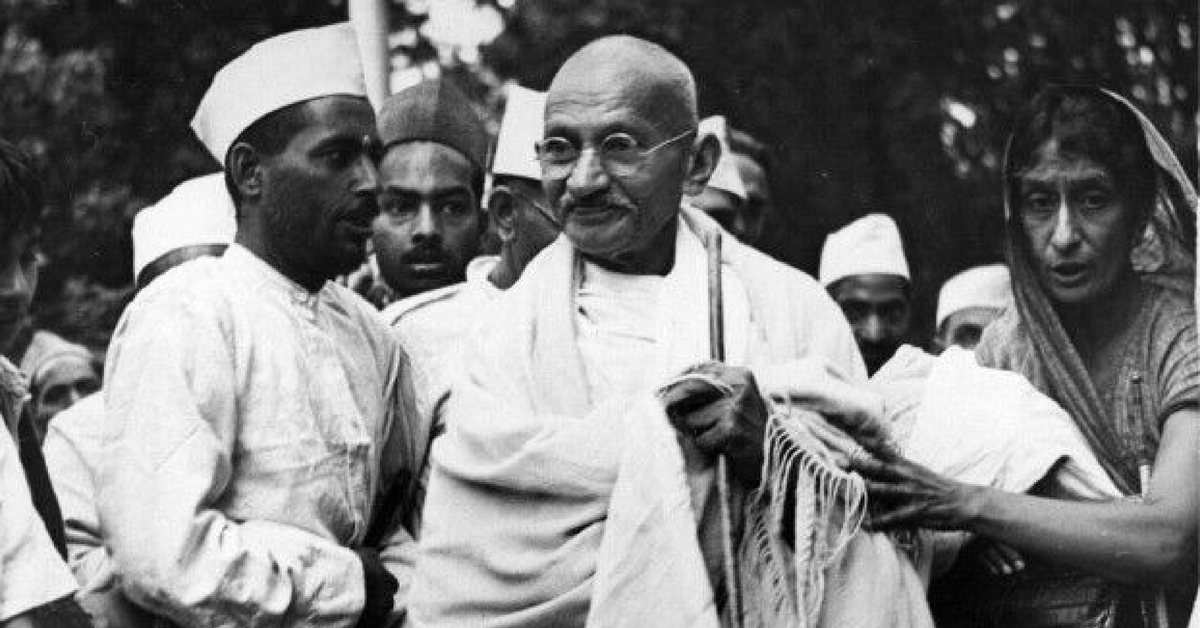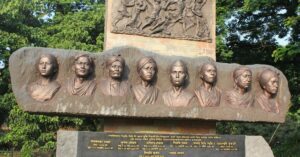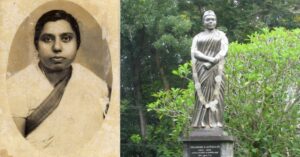‘Old Lady Gandhi’: The 71-Year-Old Who Led 6000 Protesters in the Quit India Movement!
"Even after the firing commenced, she continued to advance with the tricolour flag, leaving all the volunteers behind. The police shot her three times. She continued marching despite wounds to the forehead and both hands."

It was the time when millions of Indians were revolting against the British government. While the revolutionaries were devising their own ways to shock the Colonial power, Mahatma Gandhi and the Indian National Congress were exhorting Indians to protest against the unjust taxes and rules enforced by the British.
Among the hundreds who led these protests, Matangini Hazra, a woman from West Bengal, stands out in her own right. Born in Tamluk, a town in the Bengal presidency, she would go on to become a highly respected figure in the history of the Indian Independence movement.
Fondly known as Gandhi buri or old lady Gandhi, Matangini was born into a poor family who could not afford to get her educated and was married off to Trilochan Hazra, a 60-year-old widower, at a very young age. By the age of 18, she was already a widow and returned to her hometown.
The country was experiencing several uprisings against the British government in various pockets of India.

In 1905, at the age of 35 years, Matangini also became an active participant in the independence movement and became a follower of Mahatma Gandhi.
On 19 December 1929, the Indian National Congress passed the historic ‘Purna Swaraj’ (total independence) resolution and instructed citizens to observe 26 January 1930 as the Purna Swaraj day.
The Purna Swaraj declaration was followed by the announcement of the Civil Disobedience movement which was led by Mahatma Gandhi. Protesting the taxation on salt production, Mahatma Gandhi led his followers on a 26-day march which lasted from 12 March 1930 to 6 April 1930.
By this time, Matangini had become a dedicated believer in Gandhi’s principles. She served the poor and the diseased and also spun her own yarn and wore khadi. However, the turning point in her life came a few years later. On the 26th of January, 1932, hundreds of men were marching on the streets to bring attention to the atrocities of the British government. As they passed Matangini’s home, the 62-year-old joined the men in chanting slogans and marching with the hundreds of young men.
Later that year she produced salt at the Alinan salt centre, which led to her arrest by the British police, who made the frail old lady walk several miles before imprisoning her.

She was promptly released, but neither the unfair sentence nor the arrest deterred Matangini from her goal.
Following this incident, Matangini participated in the abolition of Chowkidari tax movement. The Chowkidari tax was the tax collected from villagers to fund a small police force in their areas. It was not only unfair, but the police troops were also used as spies against the villagers by the British Government. In 1933, while she was attending the sub-divisional conference of the Indian National Congress, the British police started a baton charge against the attendees. Matangini received several blows and was severely hurt in the process.
You may also like: Janaki Thevar, The 18-YO Who Commanded Burma’s ‘Rani of Jhansi’ Regiment
In the same year, she was marching with fellow protestors to an illegally constructed court. The then Governor of Bengal, Sir John Anderson, had built the court to punish those who participated in the Chowkidari movement. Even though he had ensured tight security on the premises. Matangini sneaked in and staged a black flag demonstration. She was arrested once again and this time was handed a 6-month imprisonment sentence in Baharampur.
This arrest just further strengthened Matangini’s resolve to fight for India’s Independence. In August 1942, the INC launched the Quit India Movement, and Gandhi’s passionate call to “do or die” inspired millions across the country.

The night that he delivered the speech, all prominent leaders of the Congress were arrested by the Government. Left leaderless, the supporters of the Congress started initiating their own protests, demanding that the British Quit India immediately. Matangini, who was a 71-year-old, led a band of 6000 protestors, a majority of whom were women, to take over the Tamluk police station. The plan was to take over the police station and establish home rule in the small town.
Just as the team reached the outskirts of the town, the British police arrived and ordered them to disband under Section 144 (Unlawful Assembly) of the Indian Penal Code. Matangini stepped forward, reportedly to request the police to not fire at the protestors, but the police ignored her request and fired a bullet which hit her arm.
Holding the Indian National flag in one hand, and backed by 6000 people behind her, all of who had gathered with the resolve to fight against the British, Matangini stood her ground.

The police fired two more bullets, which hit her other arm and then her forehead.
“Matangini led one procession from the north of the criminal court building; even after the firing commenced, she continued to advance with the tricolour flag, leaving all the volunteers behind. The police shot her three times. She continued marching despite wounds to the forehead and both hands,” reported the Biplabi newspaper.
Holding the flag, the brave lady reportedly uttered the words “Vande Mataram” and succumbed to her wounds.
You may also like: How India’s Tricolour & National Emblem Took Shape Just Days Before Independence!
In memory of the incident that cost Matangini her life, a statue was erected in the same spot at Tamluk. In fact, hers was the first statue of a woman put up in Kolkata, in independent India. Several schools and housing colonies too are named after her, and in 2002, when the nation celebrated the 60th anniversary of the Quit India Movement, the Department of Posts of India issued a five rupee postage stamp with her likeness.
Matangini is one of the many people who gave up their lives in the freedom struggle, but unlike many who have been forgotten, her contribution to the freedom struggle was rightfully recognised and given the importance it deserved.
(Edited by Gayatri Mishra)
Like this story? Or have something to share?
Write to us: [email protected]
Connect with us on Facebook and Twitter.
This story made me
-
97
-
121
-
89
-
167
Tell Us More
We bring stories straight from the heart of India, to inspire millions and create a wave of impact. Our positive movement is growing bigger everyday, and we would love for you to join it.
Please contribute whatever you can, every little penny helps our team in bringing you more stories that support dreams and spread hope.



















